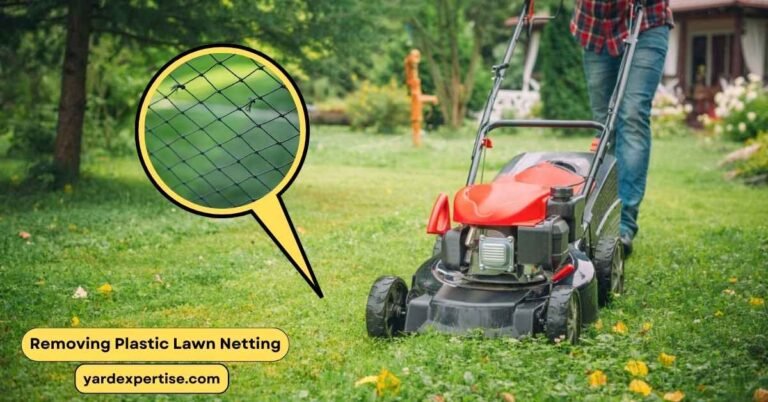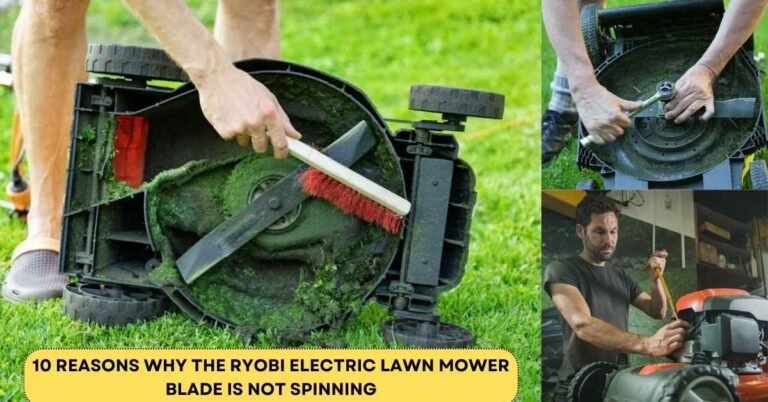Kohler Fuel Pump Problems: How to Identify and Fix Them?

A fuel pump on an engine works to ensure that fuel is supplied from the fuel tank to the carburetor and then to the engine’s cylinders at the correct flow rate and pressure. Kohler fuel pump is a suitable choice for small engines that are fitted on lawn mowers, but over time, various issues develop such as fuel pump not priming, low or no fuel flow, fuel leaks, overheating, and so on.
With proper guidance and the right tool, you can maintain, service, and replace the parts on a fuel pump to ensure smooth operation of your engine.
What Causes Kohler Fuel Pump Problems?
Numerous problems such as weak or no fuel flow, fuel leak, overheating, failure to prime properly, and so on can arise on a Kohler fuel pump because of connection issues, faulty valves, faulty wirings, dirty fuel, and dust or carbon build-up in the lines. The most common problems and their solutions are given below.
Fuel Pump Not Priming
When the engine is cranked, the fuel pump starts first and creates a negative pressure in its chamber to pull gasoline out from the tank and then creates a positive pressure to supply it to the carburetor. This process is known as priming. The causes and solutions to the problem of fuel pump not priming are listed below.
- Faulty fuel pump relay: Faulty fuel pump relay is the most probable cause behind the fuel pump failing to prime. Fuel pump relay supplies the pump with necessary electrical power to create the vacuum that pulls gasoline out from the tank.
Solution: Check the fuel pump relay’s grounds with a multimeter. Replace the relay if it shows signs of fault.
- Faulty wiring: Faulty wirings can also stop the pump from priming.
Solution: Connect the battery’s positive connection directly with the fuel pump’s ground. The ground is fine if it takes power. Otherwise, replace the grounds and the wirings.
- Faulty fuel pump fuse: Faulty fuel pumps try to take more power and blow the fuse. The fuse can also stop the fuel pump from starting if it is blown.
Solution: Replace the fuse with a new one.
- Faulty fuel pump check valve: Check valves make sure that the pressure created in the fuel pump stays at a certain level so that fuel only flows in one direction. Faulty check valves will make the pressure drop and hinder the pump from working properly.
Solution: Replace the check valves.
- Faulty fuel lines: The tube through which fuel flows from the tank to the fuel pump can also cause issues if it gets leaked or jammed.
Solution: Check all the fuel lines and connections to see if there are any leaks or jamming. Clean the tube properly if there is dust or carbon build-up. Replace the tubes if they get beyond repair.
- Faulty crank position sensor: Crank position sensor sends signal to the fuel pump to start priming when the engine is cranked. Fuel pump will not prime if the crank position sensor is faulty and fails to send the correct signal.
Solution: Replace the crank position sensor if it gets damaged.
No Fuel Flow
The fault lies in the pressure chambers or in the fuel line if there is no fuel flow to the engine. Steps to check this problem are detailed below.
- Turn off the engine.
- Disconnect the fuel line from the fuel pump. The tube that flows gasoline from the tank to the fuel pump is usually connected with a hose clamp. Remove the clamp and disconnect the tube.
- Take a small container or bowl and place it under the tube’s opening. Gasoline should pour out of the tube if you point it downwards. The tube has been compromised if fuel does not flow and you will need to change it.
- Otherwise, reconnect the tube to the fuel pump.
- Now disconnect the tube that is connecting the fuel pump to the carburetor on the point of connection to the carburetor.
- Put a small container or bowl under the tube’s opening and crank the engine. The tube should discharge fuel if the pump is functioning properly. You will need to repair or change the tube if fuel does not flow.
- The fuel pump’s valves are not functioning properly if all of the above checks out and there is still no fuel flowing.
Clean the fuel lines properly and make sure that there is no dirt, debris, or carbon build up in the line to solve the problem of no fuel flow.
Weak Fuel Flow
Steps to troubleshoot for the problem of weak fuel flow is the same as the steps to troubleshoot for the problem of no fuel flow. Weak fuel flow will be caused because of dirt, debris, or carbon build-up in the fuel line or if the fuel pump’s valves do not function properly. Clean, repair, or replace the tubes and the valves as necessary to solve this problem.
Fuel Leaks
The problem of fuel leaks stem from faulty fuel lines and faulty valves in the fuel pump. Check the fuel lines with a pressure gauge to check if they are holding the pressure and not leaking. Check the connections and the clamps to see if they are tightened properly and have not sprung a leak. Replace the tubes and the connections if they are beyond repair.
Loud or Noisy Operation
Fuel pump makes a low humming noise when the engine is cranked. If it makes more noise than usual then the problem is either dirty fuel and contamination or the fuel pump has gone bad. Drain all the fuel, clean the tank, and fill it with clean and fresh gasoline. Replace the fuel pump entirely if it still keeps making too much of a noise.
Fuel Pump Overheating
Overheating of the fuel pump results from unclean fuel or the pump becoming faulty. Drain all the fuel from the tank and fill it with clean gasoline. Replace the fuel pump entirely if it still overheats.
Dirty Fuel
Dirty fuel can cause damage to both the fuel pump and the engine. Drain and clean the gas tank and fill it with clean and fresh gasoline. Add high quality engine oil. Make sure that there is no dirt or carbon build up in the gas tank or the fuel lines.
Voltage Problems
The fuel pump will not function correctly without the proper voltage supplied to it. Make sure that 12v is being supplied to the fuel pump’s ground. Check all the wirings with a multimeter to make sure there are no short circuits or faulty wires.
Old Age or Wear
Like all components on a machine, the fuel pump is also subject to old age and wear and tear. With time, the valves and the fuel lines can sprung a leak and the fuel pump relay’s ground becomes corroded. Replace with spare parts if these components fall victim to damages beyond repair.
Incorrect Installation
Incorrect installation of the tubes and connections on the fuel pump can also cause problems. Make sure that all of the tubes are connected properly and the clamps joining the connections are tightened correctly. Ensure that the electrical connections running from the battery to the fuel pump relay is working as intended and there are no short circuits or other wiring issues.
Improper Maintenance
Dirt, dust, debris, junk, and carbon build-up can severely limit the functions of a fuel pump because of improper and irregular maintenance. Check the fuel pump and all the components connected to and from the fuel pump regularly and keep them in a pristine condition.
Ethanol Exposure
Ethanol is a corrosive substance and causes damage to the fuel lines and valves inside the fuel pump and reduces its lifespan. Always use the correct mixture of ethanol and gasoline as recommended by the manufacturer of the engine to avoid such problems. Replace the fuel pump if ethanol permanently damages it.
Kohler Fuel Pump Repair: When to Fix and When to Replace?
The decision of repairing the fuel pump or replacing it completely will depend on the problems in the fuel pump. Just changing the fuel pump power relay or the electrical wirings will be enough if they are the ones causing issues. You can also replace the fuel lines if they have sprung a leak or have become too corroded.
The valves inside the fuel pump can also cause issues and they can also be replaced. But the whole fuel system will need replacing if none of the other components are causing the issue and the fault lies in the fuel system itself.
How to Prevent Kohler Fuel Pump Issues?
It is possible to keep the fuel pump in a pristine condition with some regular maintenance and cleaning.
Regular Inspection and Cleaning
Regularly check if there has been any leaks, corrosion, or jam in the fuel lines and the valves of the fuel pump. Clean all the dirt, junk, and carbon build-up inside the tubes to make sure that fuel flows smoothly.
Fuel Quality and Storage
Always use high quality gasoline and engine oil in your engine. Use gasoline stabilizer if you wish to store the engine for longer periods of time.
Fuel Filter Replacement
Fuel filter filters out any dirt or unwanted substances in the fuel as it gets supplied through the fuel pump to the carburetor and then to the engine. Clean and replace the fuel filters in due time to avoid pumping unclean gasoline in the fuel pump and the engine.
How Do I Know if My Kohler Fuel Pump Is Bad?
Fuel pumps make a low humming noise when the engine is cranked. The fuel pump has gone bad if you do not hear the humming noise or too much noise coming from the pump. The fuel pump has gone bad if the fuel pump does not prime after the engine is cranked.
How to Diagnose Kohler Fuel Pump Problems?
The steps to diagnose the problems in a Kohler fuel pump are given below.
- Crank the engine. The fault is in the fuel pump power relay and the wirings if the pump does not take power and does not make a low humming noise.
- Check the fuel lines and the connection points to make sure they are carrying gasoline properly.
- The fault is in the fuel pump itself if the power relay, the wirings, and all the tubes are functioning properly
What Is the Average Lifespan of a Kohler Fuel Pump?
The average lifespan of a Kohler fuel pump is approximately 100,000 miles of running depending on proper maintenance and cleaning.
What Is the Warranty on Kohler Fuel Pumps?
Depending on the seller, Kohler provides one or two years of warranty on their fuel pumps.
So, do not worry about fixing your Kohler fuel system as just by following simple troubleshooting procedures, you can identify and fix all of the problems to make sure of uninterrupted gasoline flow in your engine from the fuel tank through the pump and then the carburetor.





